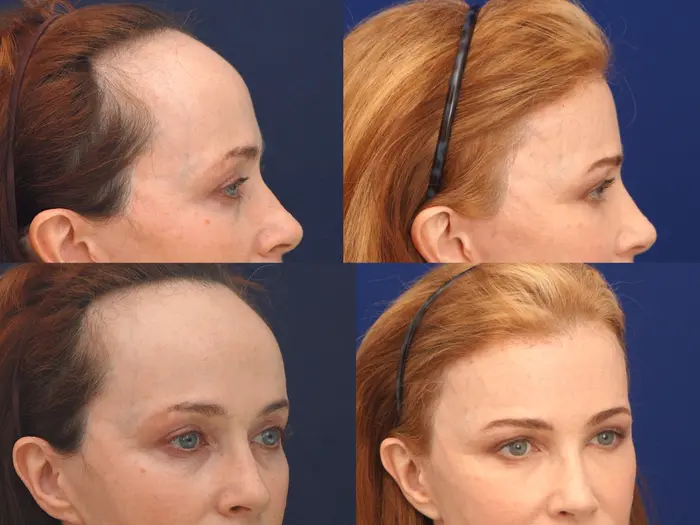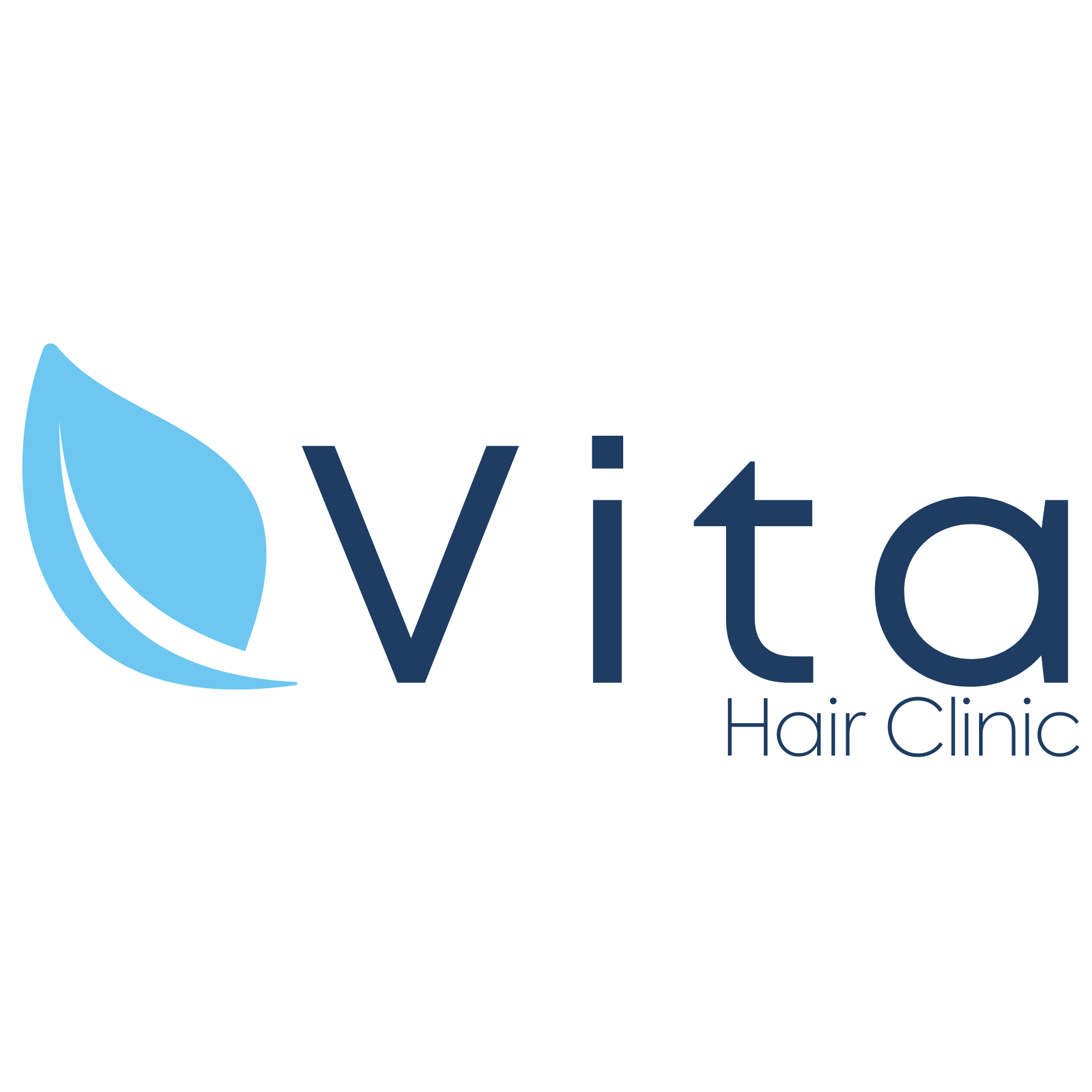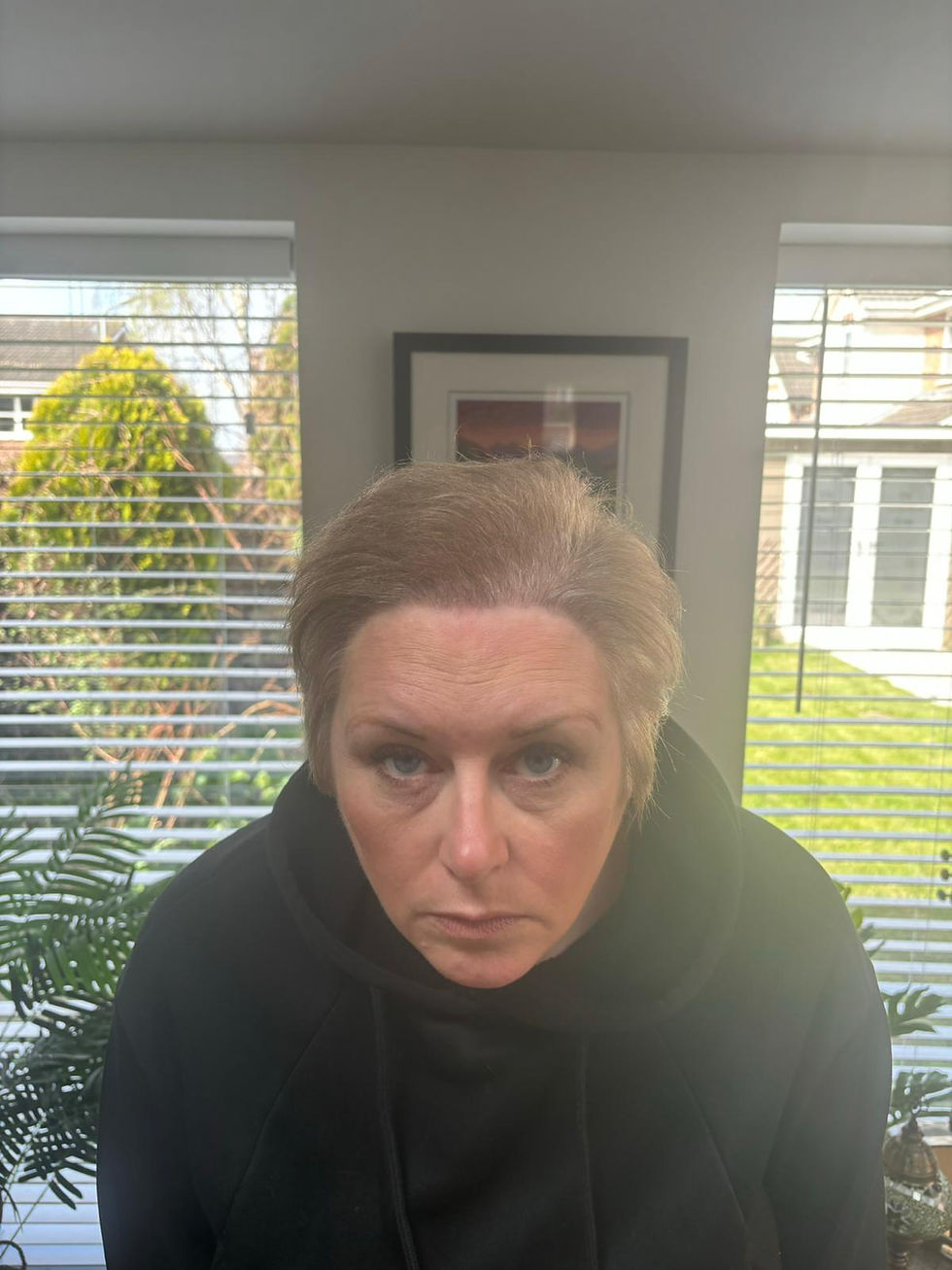Big Forehead, No Problem: Big Forehead Reduction Surgery
- Vita Hair Clinic

- Sep 4, 2024
- 14 min read
Updated: Jul 31, 2025

Introduction
Why forehead reduction surgery? Having a large forehead can be challenging for many people. Whether it’s due to genetics, hair loss, or other reasons, a prominent forehead may affect one’s self-esteem and social interactions.
Addressing forehead aesthetics becomes important as it directly impacts personal confidence and appearance.
Key takeaway: For those seeking effective solutions, the DHI hair transplant stands out as the best option for individuals with big foreheads. This advanced technique offers precision and natural-looking results, making it a top choice in cosmetic procedures.
Understanding these challenges and why it’s important to address them is crucial. Not only do aesthetic improvements enhance appearance, but they also contribute to overall well-being. The journey to a balanced forehead starts with exploring the best hair transplant options available today.
In addition to hair transplants, there are other procedures like beard implants that can help improve facial aesthetics. It’s essential to consider all available options and consult with professionals who understand your unique needs, such as those at Vita Estetic.
After undergoing such procedures, it’s normal to wonder about the long-term outcomes. If you’re curious about what to expect 10 years after a hair transplant, there are resources available that provide valuable insights into this aspect.
Ultimately, achieving desired aesthetic results is a journey that requires careful planning and understanding of the available options.
Understanding Forehead Aesthetics
Definition of Different Forehead Sizes
Forehead sizes can vary widely among individuals.
A large forehead, often defined as occupying more than one-third of the face’s vertical length, can be influenced by genetics, hairline position, and personal growth patterns.
Both men and women can have a high forehead, which might be naturally occurring or a result of hair thinning.
Cultural Perceptions of Forehead Size in Men and Women
Cultural perceptions around forehead size differ significantly:
In some cultures, a long forehead is associated with intelligence and wisdom.
Conversely, others may view a big forehead male as less aesthetically pleasing.
For women, a female big forehead can sometimes be seen as a sign of beauty and elegance, though this is subjective and varies globally.
Psychological Impact of a Prominent Forehead
Having a prominent forehead can impact an individual’s self-esteem and social interactions. Common thoughts include:
“My forehead is big; it makes me look older.”
“A high forehead might be linked to male pattern baldness.”
These perceptions can lead to reduced confidence and even social withdrawal. Addressing these concerns through techniques like hair transplants or styling can significantly improve one’s self-image and mental well-being.
Understanding these aspects provides insight into why many seek solutions for altering their forehead aesthetics.
The following sections will delve into specific hair transplant techniques that cater to these needs, which can be explored further on our contact page for inquiries or consultations.
Additionally, potential clients can view some of the successful before-and-after images from our past patients to understand the effectiveness of these procedures.
Best Hair Transplant Techniques for Big Foreheads

1. Follicular Unit Extraction (FUE) Technique
The Follicular Unit Extraction (FUE) technique is a popular method for hair transplantation, particularly beneficial for those with large foreheads seeking to lower their hairline.
This advanced procedure involves extracting individual hair follicles from a donor area, typically the back of the head, and implanting them into the recipient area.
Explanation of FUE Technique and Its Advantages Over Traditional Methods
In traditional hair transplant methods, such as strip harvesting, a strip of scalp is removed from the donor area to extract hair follicles.
This can result in significant scarring and longer recovery times. The FUE technique, on the other hand, utilizes a minimally invasive approach:
Extraction Process: Individual hair follicles are extracted using a micro-punch tool that leaves tiny puncture marks rather than a large scar.
Implantation: These follicles are then meticulously implanted into the balding or thinning areas.
Advantages of FUE Over Traditional Methods:
Minimally Invasive: The procedure involves small incisions which heal quickly without leaving noticeable scars.
Precision: Allows for precise placement of each follicle, ensuring natural-looking results.
Shorter Recovery Time: Patients experience minimal discomfort and can return to their daily activities sooner.
Reduced Risk of Complications: Lower chances of infection and post-operative complications compared to traditional methods.
Scarring and Recovery Considerations
One of the primary concerns with any surgical procedure is scarring. The FUE technique excels in minimizing visible scars due to its less invasive nature:
Scar Visibility: The small puncture wounds created during follicle extraction typically heal within a few days, leaving behind tiny dots that are often concealed by existing hair.
Recovery Period:
Initial Healing: Patients usually notice initial healing within a week.
Complete Recovery: Full recovery, where all signs of surgery have diminished, generally occurs within 10-14 days.
During this recovery period, it’s crucial to follow post-operative care instructions provided by the surgeon:
Avoid strenuous activities that may strain the scalp.
Refrain from smoking or consuming alcohol as these can impede healing.
Use prescribed topical treatments to aid in the healing process.
By adhering to these guidelines, patients can achieve optimal outcomes with minimal scarring and discomfort.
The FUE technique offers an effective solution for individuals with large foreheads looking to enhance their facial aesthetics through hair transplantation.
Its minimally invasive nature and superior precision make it an appealing option for achieving natural-looking results.
For those interested in exploring unshaven hair transplant there are various resources available that delve deeper into these subjects.
2. Direct Hair Implantation (DHI) Technique: The Best Option for Large Foreheads!
The DHI hair transplant technique stands out as a premier choice, particularly for individuals with larger foreheads.
This method involves using a pen-shaped instrument that allows for precise implantation of hair follicles directly into the scalp without creating recipient sites beforehand.
Let’s delve into the advantages that make DHI the best hair transplant option if your forehead is big.
Overview of DHI Technique and Its Advantages
The DHI hair transplant approach offers several benefits:
No Scarring: Unlike traditional methods, DHI leaves no linear scars, making it ideal for those concerned about visible post-surgery marks.
High Graft Survival Rate: The pen-like instrument minimizes the time follicles spend outside the body, enhancing their survival rate.
Minimized Trauma: Direct implantation reduces scalp trauma, leading to faster healing and recovery times.
Precision in Implantation for Natural Results
The DHI method excels in delivering natural-looking outcomes due to its precision in follicle placement:
Control Over Angle, Depth, and Direction: Each follicle is implanted with meticulous control over its angle, depth, and direction, ensuring a natural appearance.
Customized Hairline Design: Surgeons can design a hairline that complements individual facial features, offering tailored results.
Suitability for Various Hair Types and Conditions
DHI’s versatility makes it suitable for different hair types and conditions:
Adaptable to Different Hair Textures: Whether dealing with straight or curly hair, DHI provides consistent results across various textures.
Effective for Androgenic Alopecia: This technique is particularly beneficial for treating androgenic alopecia by targeting thinning or balding areas with precision.
While we will compare the advantages of DHI over FUE and FUT techniques in detail later on, it’s important to note that each method has its pros and cons based on individual needs and conditions.
Understanding these nuances helps in making an informed decision about the best approach to achieve desired aesthetic outcomes.
For those considering this life-changing procedure, Turkey has become a hub for advanced hair transplant techniques like DHI.
With top surgeons offering their expertise at affordable prices compared to other countries, many are choosing to undergo their hair restoration journey here.
As highlighted by Vita Estetic, a renowned name in the Turkish hair transplant industry, patients can achieve their dream hair in just three days while also saving significantly on costs.
Comparison with FUT Technique: Why DHI is Superior!
When evaluating hair transplant options, understanding the differences between FUT, FUE, and DHI techniques is crucial. Each method has distinct characteristics and advantages.
Differences Between FUT and FUE/DHI Techniques
Follicular Unit Transplantation (FUT):
Involves removing a strip of scalp from the donor area.
Hair follicles are extracted from this strip and implanted into the recipient area.
Leaves a linear scar at the donor site.
Follicular Unit Extraction (FUE):
Individual hair follicles are directly extracted from the scalp.
Avoids a large scar but may still leave tiny dot-like scars.
Suitable for patients who prefer short hairstyles due to minimal scarring.
Direct Hair Implantation (DHI):
A variation of FUE, utilizing a pen-shaped instrument for precise follicle implantation.
Offers greater control over depth, direction, and angle of each graft.
No need for incisions or stitches, minimizing scarring.
Recovery Times and Scarring Implications
FUT:
Typically involves a longer recovery time due to the invasive nature of the procedure.
Patients may experience more discomfort post-surgery owing to the stitches required at the donor site.
FUE:
Faster recovery compared to FUT; most patients resume normal activities within a few days.
Minimal scarring makes it an attractive option for many.
DHI:
Recovery is generally swift, similar to FUE techniques.
The absence of significant scarring allows for quicker healing and less post-operative discomfort.
Cost Comparisons
FUT:
Often less expensive than FUE and DHI due to simpler procedure requirements.
FUE:
Costs more than FUT but provides better aesthetic outcomes with fewer visible scars.
DHI:
Generally the most expensive option due to its advanced technique and precision tools involved.
Comparing these methods highlights why DHI often stands out as the best hair transplant if forehead is big.
Its precision, minimal scarring, and faster recovery times align well with the needs of individuals seeking natural-looking results without extensive downtime.
Forehead Reduction Surgery Explained: A Comprehensive Guide to Hairline Lowering Procedures

What is Forehead Reduction Surgery?
Forehead reduction surgery, also known as hairline lowering surgery, is a cosmetic operation aimed at decreasing the height of the forehead.
This procedure involves the removal of a strip of skin from the upper forehead and repositioning the hairline closer to the eyebrows.
Ideal candidates for this surgery include:
Individuals with a high hairline
Those seeking to balance facial proportions
Patients looking to improve facial aesthetics
Expected outcomes often include a more harmonious facial appearance and increased self-confidence.
Risks and Complications
Like any surgical procedure, forehead reduction surgery carries certain risks. Common complications may include:
Infection
Scarring
Nerve damage
Choosing an experienced surgeon is crucial in minimizing these risks.
It’s essential to vet potential surgeons by reviewing their credentials, past patient reviews, and before-and-after photos of previous surgeries.
Recovery Process
The typical recovery timeline post-surgery spans several weeks. Initial swelling and bruising generally subside within two weeks, but full healing can take longer.
Key post-op care instructions include:
Keeping the surgical area clean and dry
Avoiding strenuous activities for at least two weeks
Following all prescribed medication regimens
Adhering to these guidelines ensures optimal healing and helps achieve the desired aesthetic results.
Importance of Adding Density to the New Hairline Post-Surgery
After forehead surgery, adding density through hair grafting is crucial.
This step not only improves the aesthetic appearance but also ensures the longevity and health of the transplanted hair.
Why density matters:
Creates a fuller, more youthful look
Enhances confidence and satisfaction
Mimics natural hair growth patterns
Patients considering this combination approach should consult with experienced surgeons who specialize in both scalp advancement and hair grafting to achieve optimal results.
Non-Surgical Alternatives to Consider for Big Foreheads!
Recommended Hairstyles That Minimize Forehead Visibility
Choosing the right hairstyle can significantly impact the appearance of a large forehead. For both men and women, certain styles are particularly effective:
Men:
Fringes: A fringe or bangs can cover the forehead, creating a balanced look.
Textured Crop: Adds volume on top while shortening the sides, drawing attention away from the forehead.
Side Part: A deep side part breaks up the forehead’s length.
Women:
Bangs: Full or side-swept bangs cover the forehead and create a youthful appearance.
Layered Cuts: Layers add dimension and distract from a high hairline.
Curly or Wavy Styles: Volume and texture reduce the prominence of a big forehead.
Tips on Choosing Flattering Styles
Face Shape: Match hairstyles with face shape to enhance overall aesthetics. For example, longer faces benefit from horizontal lines created by bangs.
Hair Texture: Opt for styles that work with natural hair texture to ensure manageability and longevity.
Personal Style: Choose cuts that align with personal style preferences for added confidence.
Finding the Right Clinic for Your Needs: Why Choose Vita Estetic Hair Transplant Clinic? Dr. Kinyas‘s Expertise Explained!
Selecting the right clinic for hair restoration procedures can make a significant difference in both the process and results.
Vita Estetic Hair Transplant Clinic, located in Turkey, stands out as a premier choice, especially for individuals with large foreheads.
Benefits of Choosing a Specialized Clinic
Choosing a specialized clinic like Vita Estetic offers several advantages:
Expertise in Advanced Techniques: Clinics specializing in hair restoration are proficient in the latest techniques such as DHI and FUE. They also offer beard implants, which are an excellent solution for those looking to enhance their facial hair.
Personalized Treatment Plans: Tailored solutions based on individual needs ensure optimal results.
State-of-the-Art Facilities: Access to cutting-edge technology and equipment enhances the quality of care and outcomes.
Comprehensive Post-Op Care: Ongoing support and detailed post-operative instructions contribute to successful recovery.
Dr. Kinyas’s Experience and Success Stories
Dr. Kinyas is renowned for his expertise in hair transplant procedures with over 10 years of experience.
His approach emphasizes natural-looking results and patient satisfaction:
“Dr. Kinyas’s meticulous attention to detail ensures that each hair follicle is implanted at the correct depth, direction, and angle, providing a seamless and natural appearance.”
Patients often share their transformative experiences:
Carlos chose Vita Estetic after witnessing his cousin’s remarkable results. He praised Dr. Kinyas’s professional operation using the advanced DHI technique.
Jason highlighted the comfort provided by the staff and Dr. Kinyas’s expertise, which made his experience stress-free and successful.
By selecting Vita Estetic Hair Transplant Clinic, individuals can trust they are in capable hands receiving the best hair transplant if forehead is big.
Costs Associated with Hair Transplants and Surgery: Understanding Financing Options Available!
Average Costs Associated with DHI Procedures at Vita Estetic Clinic
When considering a hair transplant, understanding the costs involved is crucial. At Vita Estetic Clinic, the Direct Hair Implantation (DHI) procedure typically ranges from €2500 to €3000.
This cost is influenced by several factors:
Number of Grafts: The more grafts required, the higher the cost.
Technique Used: DHI tends to be more expensive than traditional methods due to its precision and the expertise required.
Surgeon’s Experience: A highly experienced surgeon like Dr. Kinyas may command higher fees.
Clinic Location and Facilities: Premium locations with state-of-the-art facilities can also affect pricing.
For a detailed breakdown of the costs associated with different hair transplant procedures, you can visit this link.
Factors Influencing the Overall Cost
Several elements can impact the overall cost of a hair transplant:
Patient’s Hair Characteristics: Thicker or denser hair may require more intricate work.
Extent of Hair Loss: More extensive hair loss can necessitate more grafts.
Additional Services: Pre-operative consultations, post-operative care, and follow-up visits contribute to the total expense.
Overview of Financing Options for Patients Considering Surgery or Transplants
Affording a hair transplant is made easier with various financing options available at Vita Estetic Clinic:
Installment Plans: Spread the cost over several months with manageable monthly payments.
Medical Loans: Access loans specifically designed for medical procedures, often with favorable terms.
Credit Cards: Utilize credit cards offering low-interest rates or extended repayment periods.
Understanding these financial aspects allows patients to make informed decisions about their hair restoration journey.
Addressing Specific Hair Loss Issues
It’s important to note that hair loss can manifest in various forms, such as a bald spot on the crown.
This condition can significantly impact one’s self-esteem.
However, there are effective treatments available that can help regain confidence.
Exploring the causes, effects, treatment options, and preventive measures for such specific issues is essential in making informed decisions about hair restoration.
Why Turkey is the Best Choice for Forehead Reduction Surgery
When it comes to forehead reduction surgery, Turkey is widely recognized as the top destination for those seeking effective and affordable solutions. Here’s why:
1. Advanced Techniques and Experienced Surgeons
Turkey has earned a reputation as a leader in medical tourism, particularly for forehead reduction surgeries.
The country is home to numerous clinics that are equipped with state-of-the-art technology and staffed by highly skilled surgeons.
These professionals specialize in performing intricate procedures, ensuring natural-looking results with minimal scarring.
Advanced Techniques: Clinics in Turkey utilize the latest surgical methods, such as Direct Hair Implantation (DHI) and Follicular Unit Extraction (FUE), which provide patients with enhanced precision and quicker recovery times.
Experienced Surgeons: Many Turkish surgeons have decades of experience and have performed thousands of successful forehead reduction surgeries. Their expertise contributes to high success rates and patient satisfaction.
2. Affordable Prices Without Compromising Quality
One of the main reasons why people choose Turkey for hairline reduction surgery is the cost-effectiveness of the procedures offered.
Patients can expect to receive top-notch treatment at a fraction of the price compared to clinics in Western Europe or North America.
Cost-Effective Solutions: Despite utilizing advanced techniques and state-of-the-art facilities, surgeries in Turkey are significantly more affordable. This affordability extends to all aspects of the treatment process, from initial consultations to post-operative care. Understanding the cost of hair transplant in Turkey can provide valuable insights into budgeting for this procedure.
Comprehensive Packages: Many clinics offer all-inclusive packages that cover accommodation, transportation, and aftercare services, providing additional convenience and value for international patients.
3. Modern Facilities and High Patient Satisfaction
Turkey’s medical infrastructure is on par with global standards, featuring modern facilities designed to enhance patient comfort and safety.
Clinics prioritize hygiene, employ diligent staff, and use top-tier equipment, ensuring each patient receives optimal care.
Modern Infrastructure: Turkish clinics are equipped with advanced medical technologies that enable precise surgical procedures and efficient recoveries.
High Patient Satisfaction: Testimonials from former patients frequently highlight their positive experiences, noting not only the high quality of medical care but also the hospitality and support provided throughout their stay.
4. Positive Feedback from Previous Patients
Numerous testimonials from satisfied patients underscore the benefits of choosing Turkey for forehead reduction surgery. Here are a few examples:
“I traveled from Brazil to Turkey for my hairline reduction surgery. The results exceeded my expectations! The clinic was modern, the staff were friendly, and my surgeon was incredibly skilled.” – David H., Brazil
“Choosing Turkey was one of the best decisions I’ve made. The entire process was smooth, from my initial consultation to my post-op care. Plus, it was much more affordable than back home in the USA.” – Mike O., USA
Conclusion: Reclaim Your Confidence Through Personalized Solutions Based on Individual Needs!
Addressing a prominent forehead can significantly enhance one’s self-esteem and overall appearance.
From DHI hair transplant to forehead reduction surgery, multiple options are available that cater to individual needs.
Key Takeaways:
DHI Hair Transplant: Recognized as the best hair transplant if forehead is big, this technique offers:
No scarring
Natural-looking results
High graft quality and short recovery time
Forehead Reduction Surgery: Ideal for those seeking immediate and dramatic improvement in forehead aesthetics. Turkey remains a top destination, combining advanced techniques with affordability.
Why Choose Vita Estetic Hair Transplant Clinic?
Expertise of Dr. Kinyas: Over 10 years of experience with numerous success stories.
Comprehensive Care: From pre-surgery consultation to post-operative care, ensuring optimal outcomes.
Investing in these personalized solutions not only transforms physical appearance but also boosts confidence.
Whether opting for DHI or forehead reduction surgery, selecting the right procedure and clinic plays a crucial role in achieving desired results.
Reclaim your confidence by exploring these tailored solutions designed to meet your unique needs.
FAQs (Frequently Asked Questions)
What is the best hair transplant option for individuals with a big forehead?
The best hair transplant option for individuals with a big forehead is the Direct Hair Implantation (DHI) technique. This method allows for precise implantation, resulting in more natural-looking results and is suitable for various hair types.
What are the different hair transplant techniques available for large foreheads?
The two primary techniques for hair transplants in individuals with large foreheads are Follicular Unit Extraction (FUE) and Direct Hair Implantation (DHI). FUE involves extracting individual hair follicles, while DHI allows for direct implantation of these follicles, providing more control over the angle and depth of placement.
What does forehead reduction surgery entail?
Forehead reduction surgery, also known as hairline lowering surgery, involves surgically reducing the height of the forehead by repositioning the hairline. Ideal candidates typically have a high forehead and seek to improve their facial aesthetics.
What should I look for when choosing a clinic for my hair transplant?
When selecting a clinic for your hair transplant, it’s crucial to choose one that specializes in hair restoration procedures. Look for clinics like Vita Estetic Hair Transplant Clinic, which boasts experienced surgeons like Dr. Kinyas and has a track record of successful outcomes.
Are there non-surgical alternatives to consider for minimizing a large forehead?
Yes, non-surgical alternatives include choosing specific hairstyles that minimize forehead visibility and considering scalp micropigmentation as a temporary solution to create an illusion of density along the hairline.
What are the typical costs associated with hair transplants and forehead reduction surgeries?
The costs of DHI procedures can vary based on several factors such as the extent of the procedure and clinic location. It’s essential to discuss financing options available at clinics like Vita Estetic Clinic to help manage expenses related to surgery or transplants.













.png)
Comments